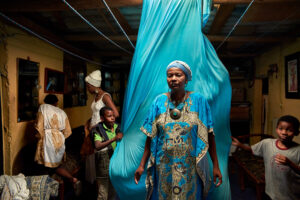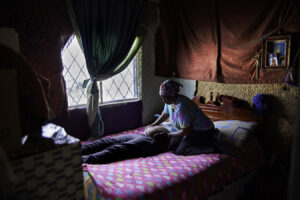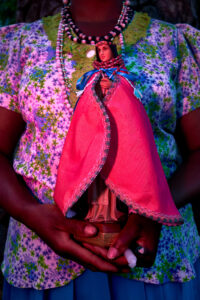Cimarrona, I am black because the sun looked at me is a photo documentary essay that explores the story of the daughters and granddaughters of black women who survived slavery in Latin America.This project aims to remarks women empowerment for black liberation through spiritual legacy that remains alive through the preservation of ancestral practices as a way of cultural resilience, protect their territories, and resist racism.
This project started when one of my friends told me: ¨You are lucky to live with your mother, my people were deterritorialized. I never got to meet my mom, Africa. The only way for us to get back to her is through our spirituality.¨ Karla Viteri. Since that day, I began this journey documenting my friends, their families, neighborhoods, and the ancestral territories in Ecuador where the black spirit expresses itself.
Cimarrona refers to the wild female spirit that holds an African essence and expresses it in all forms of resistance against racism. The diaspora’s cultural migratory reconfiguration in their new territories renewed the African legacy in the so-called “new continent.” Black people arrived in Latinamerica in the XVI century. Thousands of enslaved bodies reached Colombia to be distributed in Ecuador and around the region. Black women planned cultural and military strategies for their liberation. Each expression and all spiritual rituals- currently combined with religious syncretism- are keys to reverting their forced deterritorialization.
In Latin America, one in every four people identifies as an Afro-descendant. Roughly 50% are women. These communities have more than five centuries of black resilience and one of the biggest bio-diversities in the world: mangroves, tropical forests, and mountains are protected by them. The continuance of traditions is fundamental for defending their territory, which, today, is menaced by illegal mining, timber extraction, and pollution by mercury. New cultural influence and mass migration of the new generations challenge their ancestry with the risk of losing it to globalization.
In a world where violence against black people grows, their ancestral rituals and cultural migratory reconfiguration have been adapted to their new territories to settle down as a way to reaffirm their identity into new generations. Cimarron’s legacy is also the legacy of the new femininity and humanity liberation.
Actually, I finished a photo essay in Ecuador and I am working on a photographic and multimedia body of work of Cimarrona routes in Colombia. The history of the diaspora is told through orality, stories, songs, and poetry of new generations of Maroon women assembled into a short multimedia piece that you could check in this link: https://vimeo.com/734380508











